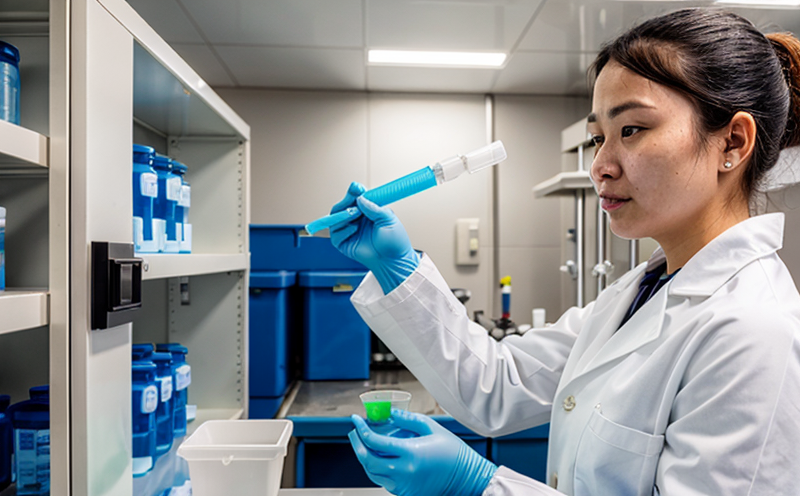USP Enterobacteriaceae Detection Testing
The United States Pharmacopeial Convention (USP) has established stringent standards to ensure the quality, safety, and efficacy of pharmaceutical products. One critical aspect of this is USP Enterobacteriaceae detection testing, which aims to identify the presence or absence of Enterobacteriaceae in drug substances and excipients.
Enterobacteriaceae are a family of gram-negative bacteria that include several genera such as Escherichia, Salmonella, Shigella, and Klebsiella. These microorganisms can contaminate pharmaceuticals during production, storage, or distribution, posing significant risks to patient health. USP Enterobacteriaceae detection testing is a pivotal step in the quality assurance process to prevent contamination and ensure product safety.
The testing procedure involves several steps, including sample collection from drug substances and excipients, preparation of the samples for analysis, inoculation onto selective media, incubation, and subsequent identification using biochemical tests. This method ensures that any potential Enterobacteriaceae present in the samples can be accurately detected.
The significance of this testing cannot be overstated. It is a cornerstone of compliance with USP monographs and ensures adherence to Good Manufacturing Practices (GMP). The results are critical for regulatory submissions, quality assurance programs, and ensuring product safety on the market. This service not only helps in maintaining the integrity of pharmaceutical products but also plays a crucial role in safeguarding public health.
The methodology used in USP Enterobacteriaceae detection testing is based on established international standards such as USP General Chapter 1230. This chapter provides detailed instructions and guidelines for the detection of microorganisms, including the steps to follow during sample preparation, inoculation, incubation, and final identification. By adhering to these standards, laboratories can ensure consistent and reliable test results.
Quality managers and compliance officers benefit greatly from this testing service as it provides them with critical data for decision-making processes related to product safety and quality assurance. R&D engineers can also leverage the insights gained from this testing to improve production processes and enhance the overall quality of drug products. For procurement departments, ensuring that suppliers meet these stringent standards is essential for maintaining high-quality product sourcing.
Scope and Methodology
- Sample Collection: Samples are collected from drug substances, excipients, and other relevant materials used in the production of pharmaceutical products. These samples must be representative of the entire batch.
- Preparation: The collected samples undergo necessary preparation steps to ensure they are suitable for analysis. This may include dilution or concentration as required by the test protocol.
- Inoculation: Prepared samples are inoculated onto selective media that favor the growth of Enterobacteriaceae while inhibiting other microbial species. Commonly used media include MacConkey agar and EMB agar.
- Incubation: The inoculated plates are incubated under conditions optimal for Enterobacteriaceae growth, typically at 35°C to 37°C for 18 to 24 hours. During this period, any colonies indicative of Enterobacteriaceae should develop.
- Identification: Colonies that have grown on the selective media are further characterized using a range of biochemical tests such as IMViC (Indole, Methyl Red, Voges-Proskauer, Citrate) tests, Gram staining, and other specific reactions like the Kligler Iron Agar test.
Benefits
- Enhanced Product Safety: By detecting Enterobacteriaceae, this service ensures that pharmaceutical products are free from contamination by harmful bacteria.
- Compliance with Regulatory Standards: Adherence to USP standards guarantees that pharmaceutical companies meet regulatory requirements and can confidently submit their products for approval.
- Improved Quality Assurance: This testing service provides valuable data that helps quality managers and compliance officers make informed decisions regarding product safety and quality assurance programs.
- Informed R&D Decisions: R&D engineers can utilize the insights gained from this testing to refine production processes and improve product quality.
Industry Applications
- Pharmaceutical Manufacturing: This service is essential for ensuring that drug substances and excipients used in pharmaceutical manufacturing are free from Enterobacteriaceae contamination.
- Quality Assurance Programs: Quality assurance teams can rely on the results of this testing to ensure their programs meet regulatory standards and provide safe products to consumers.
- R&D and Development: Research and development departments benefit from the data provided by this service, which helps them improve product formulations and production methods.





